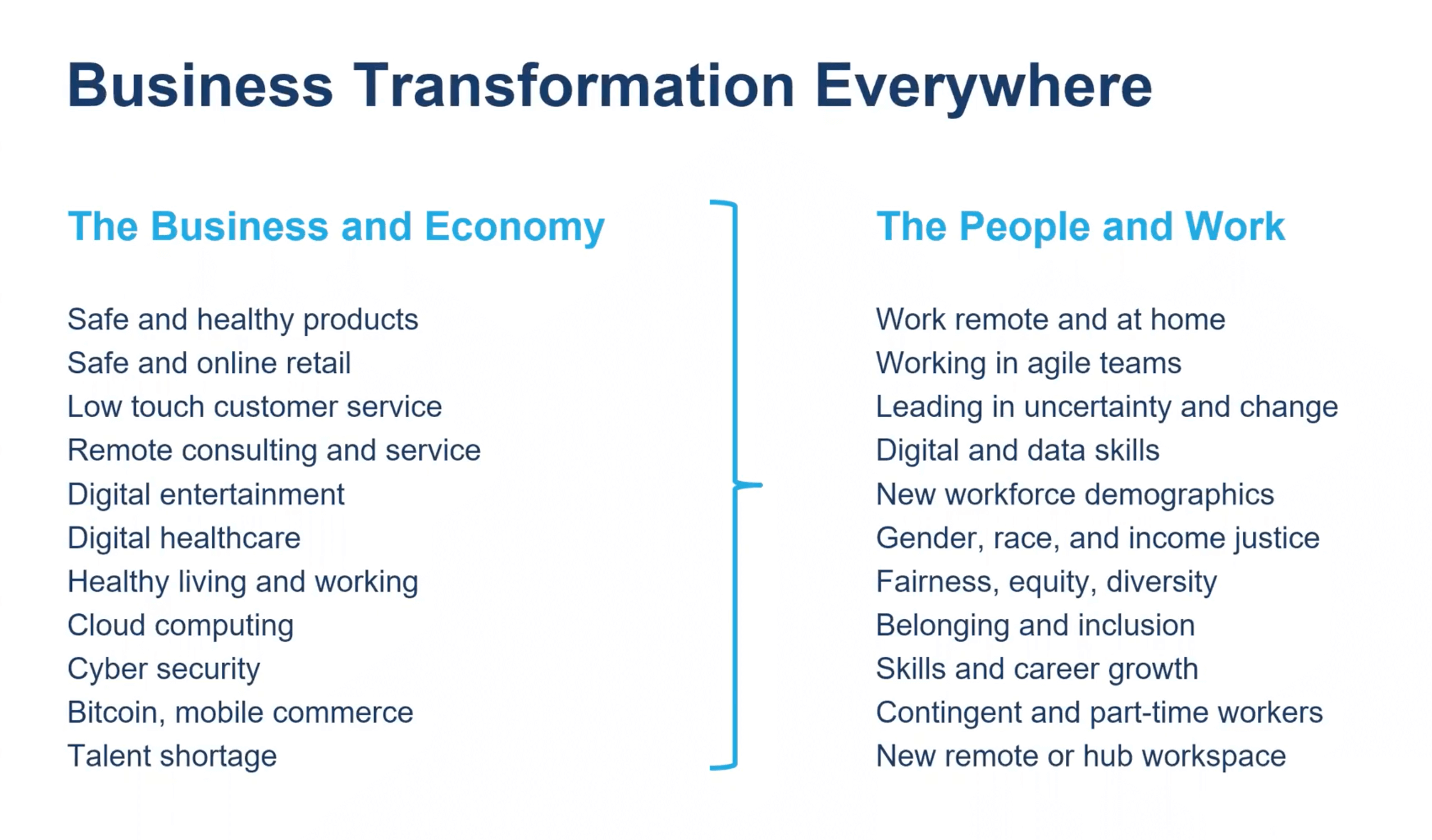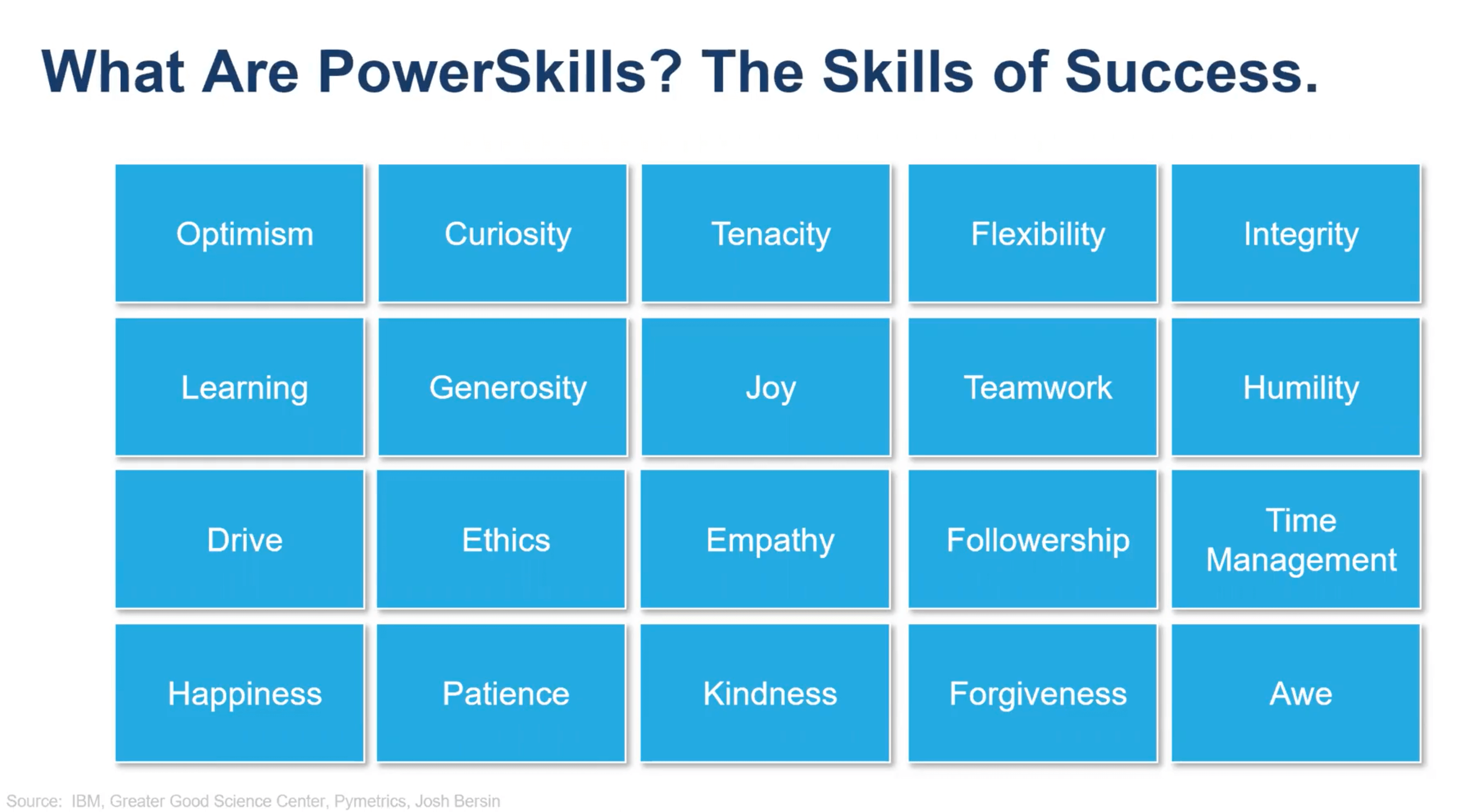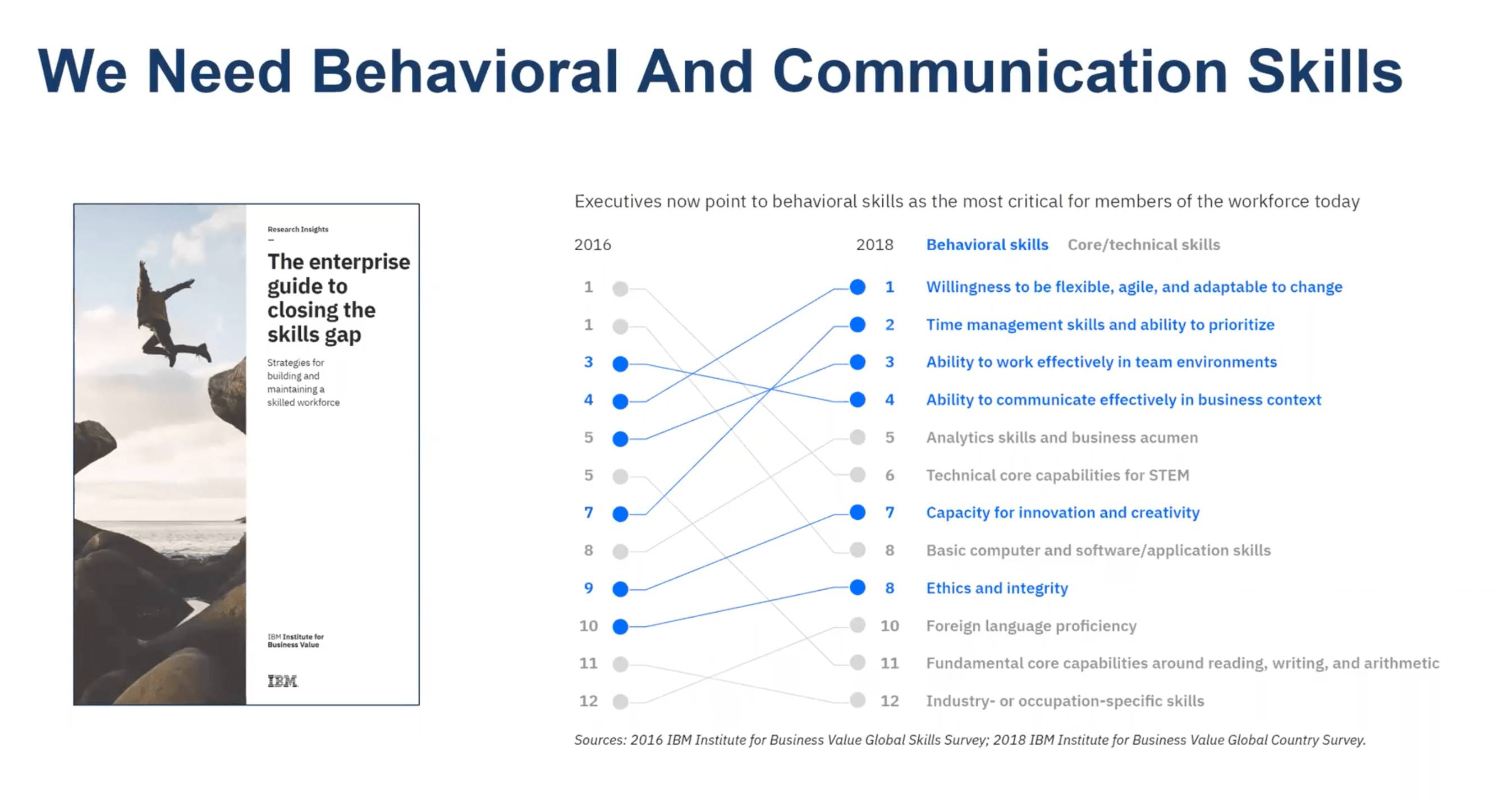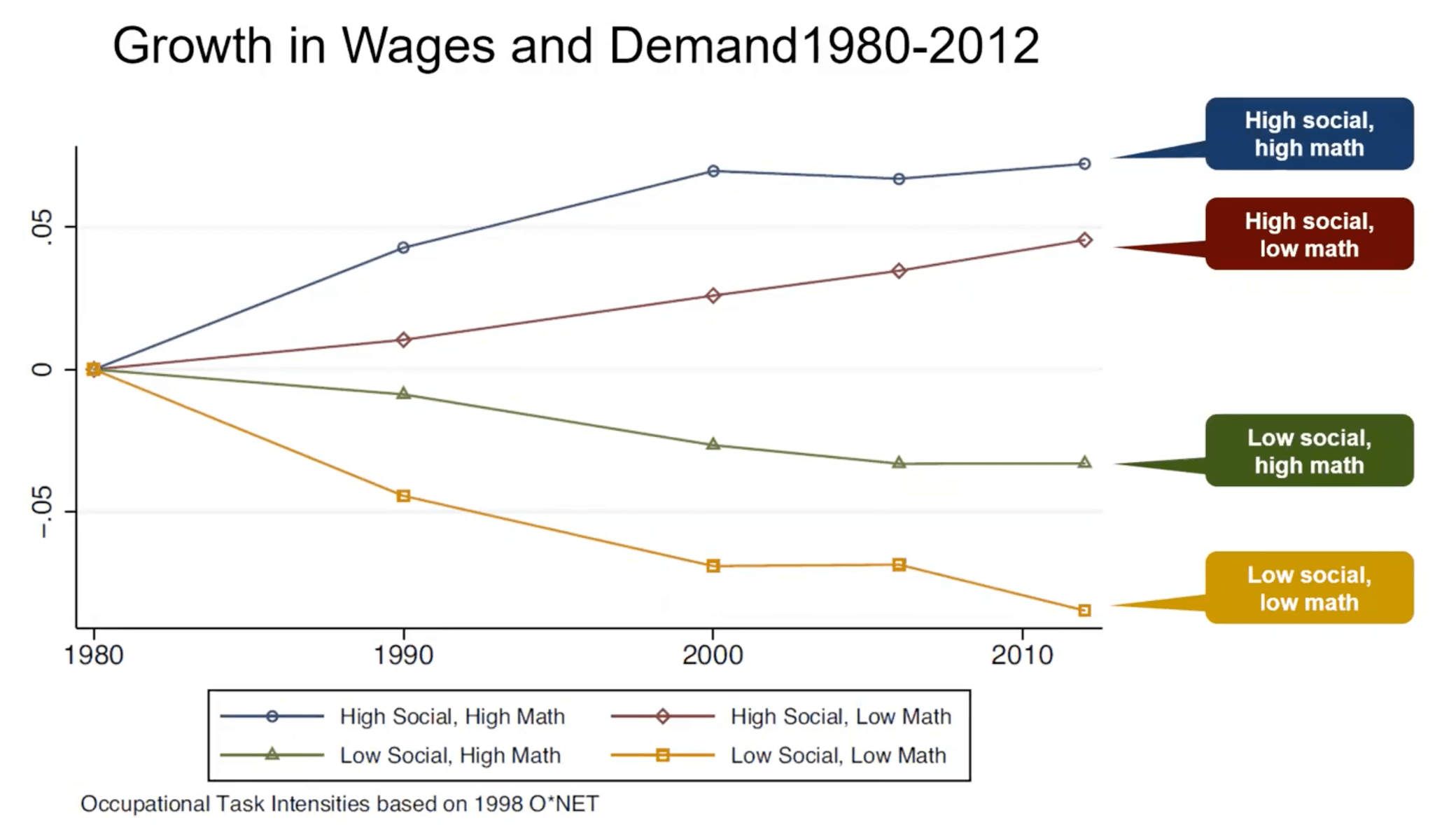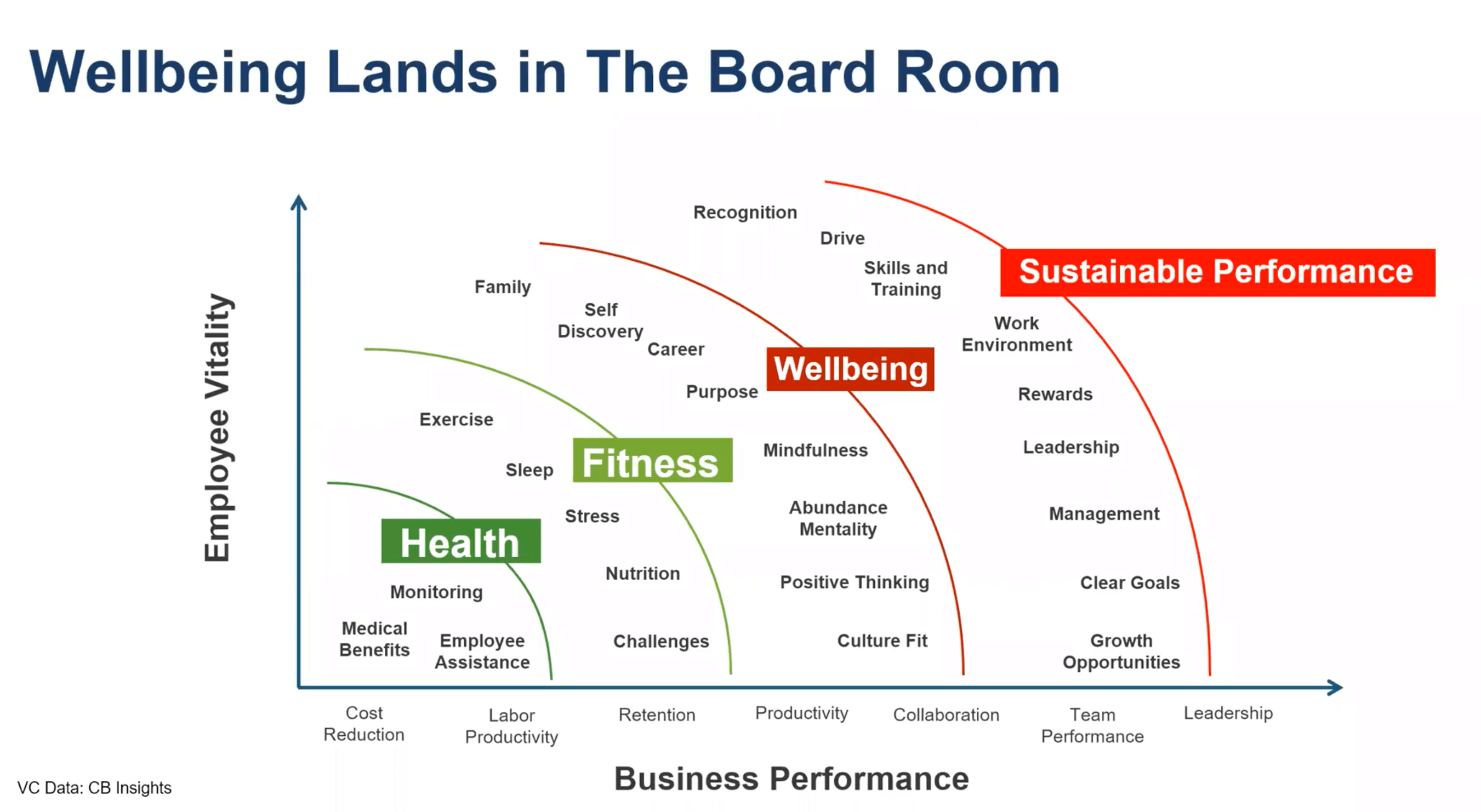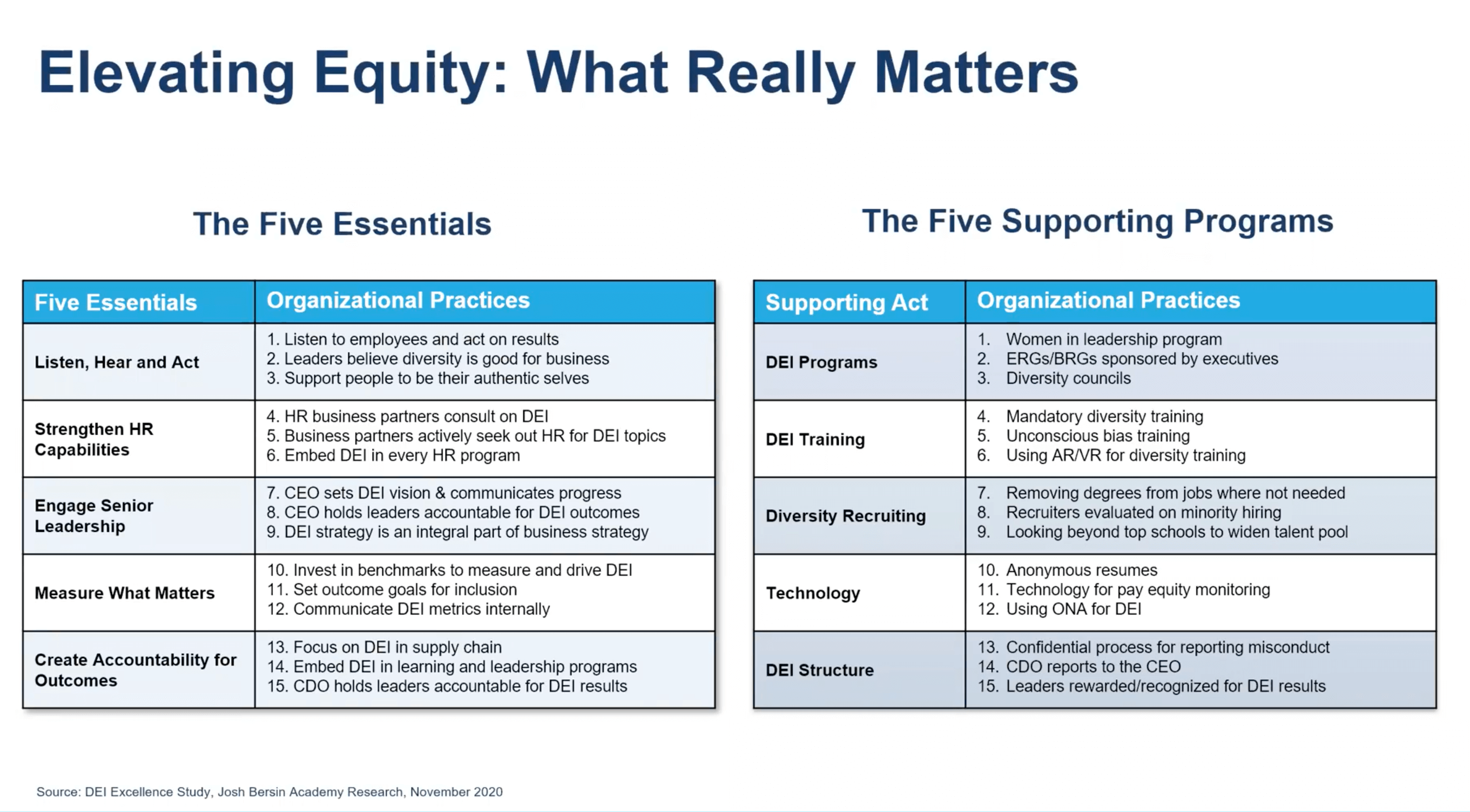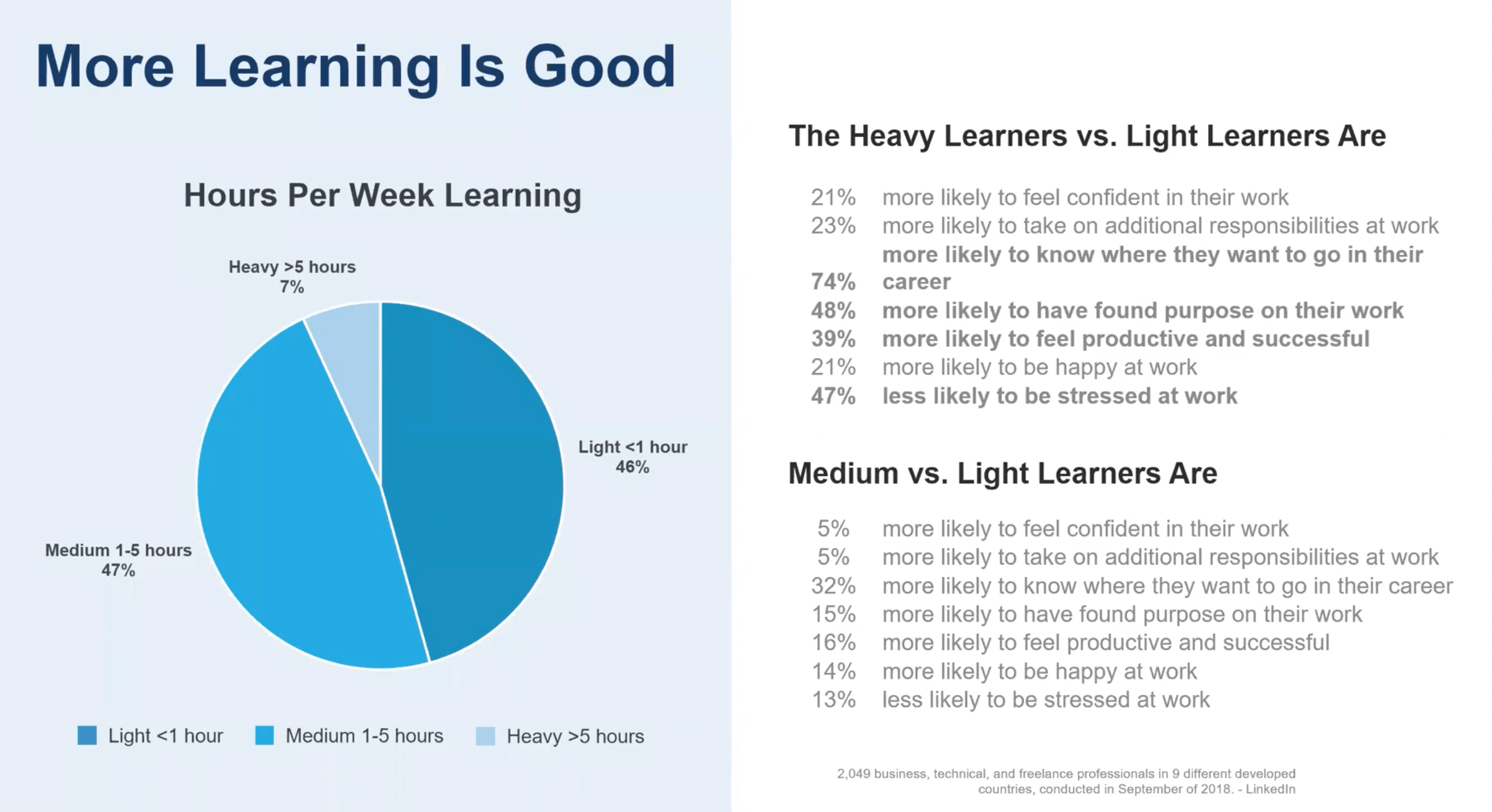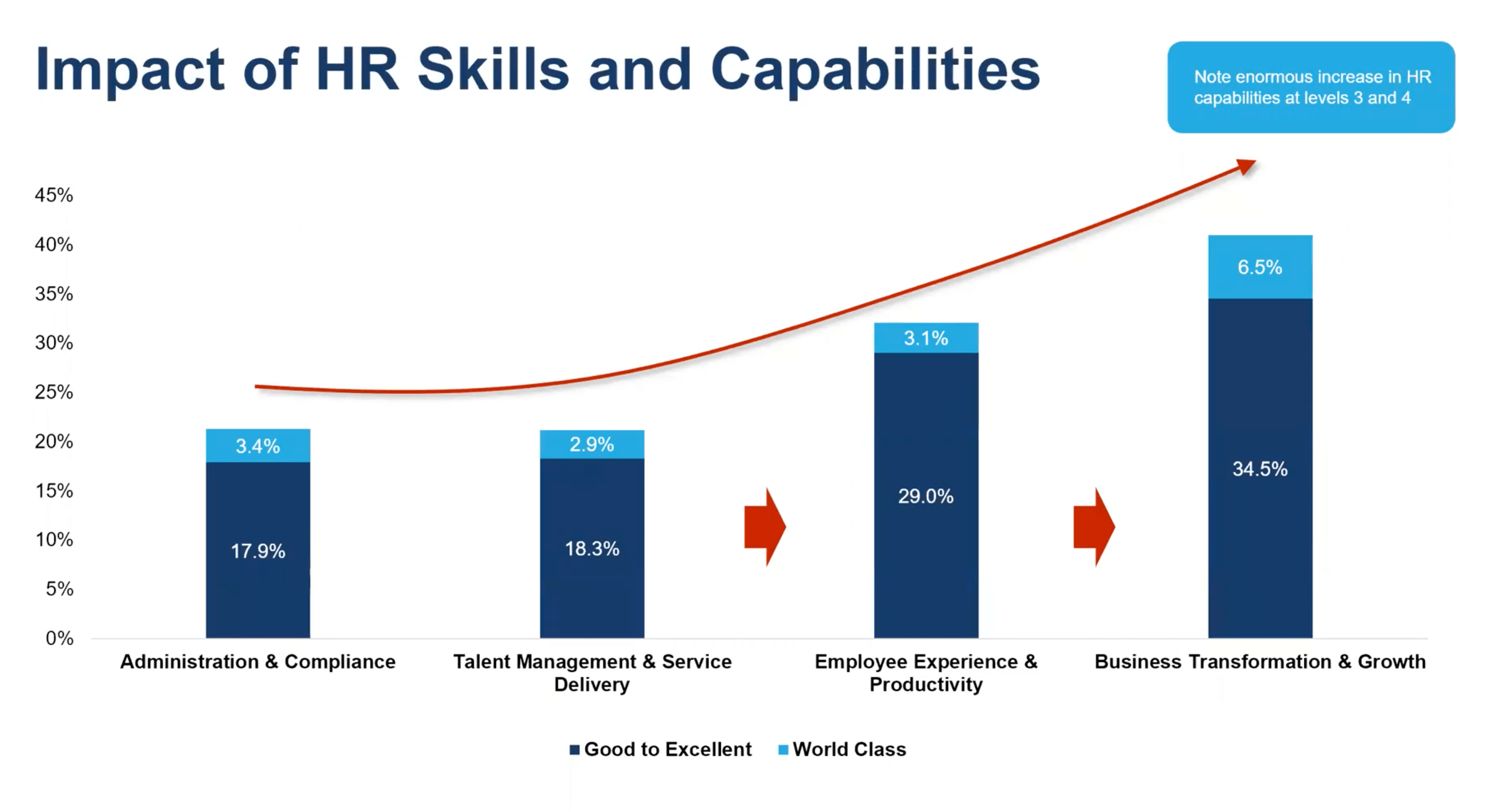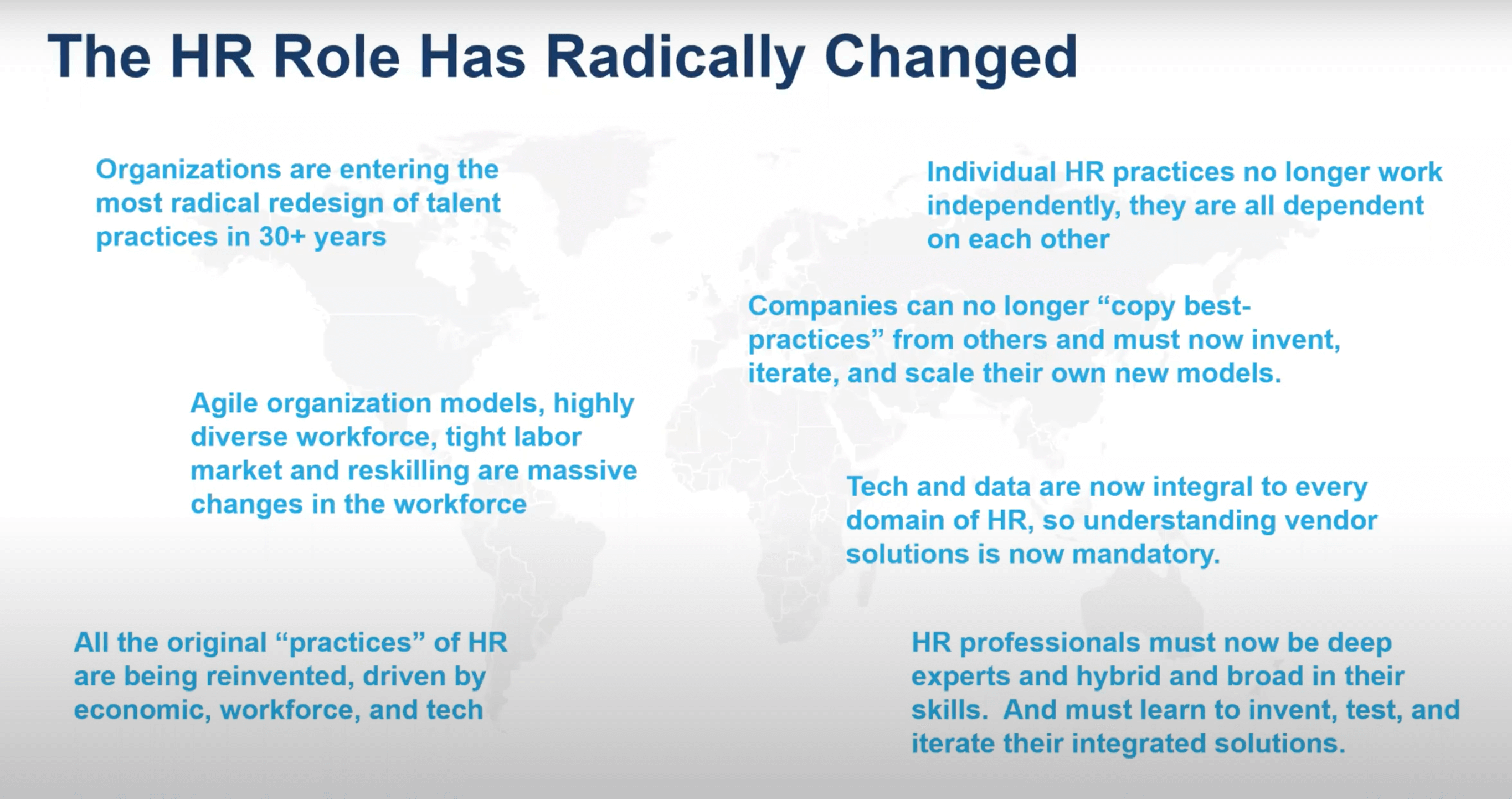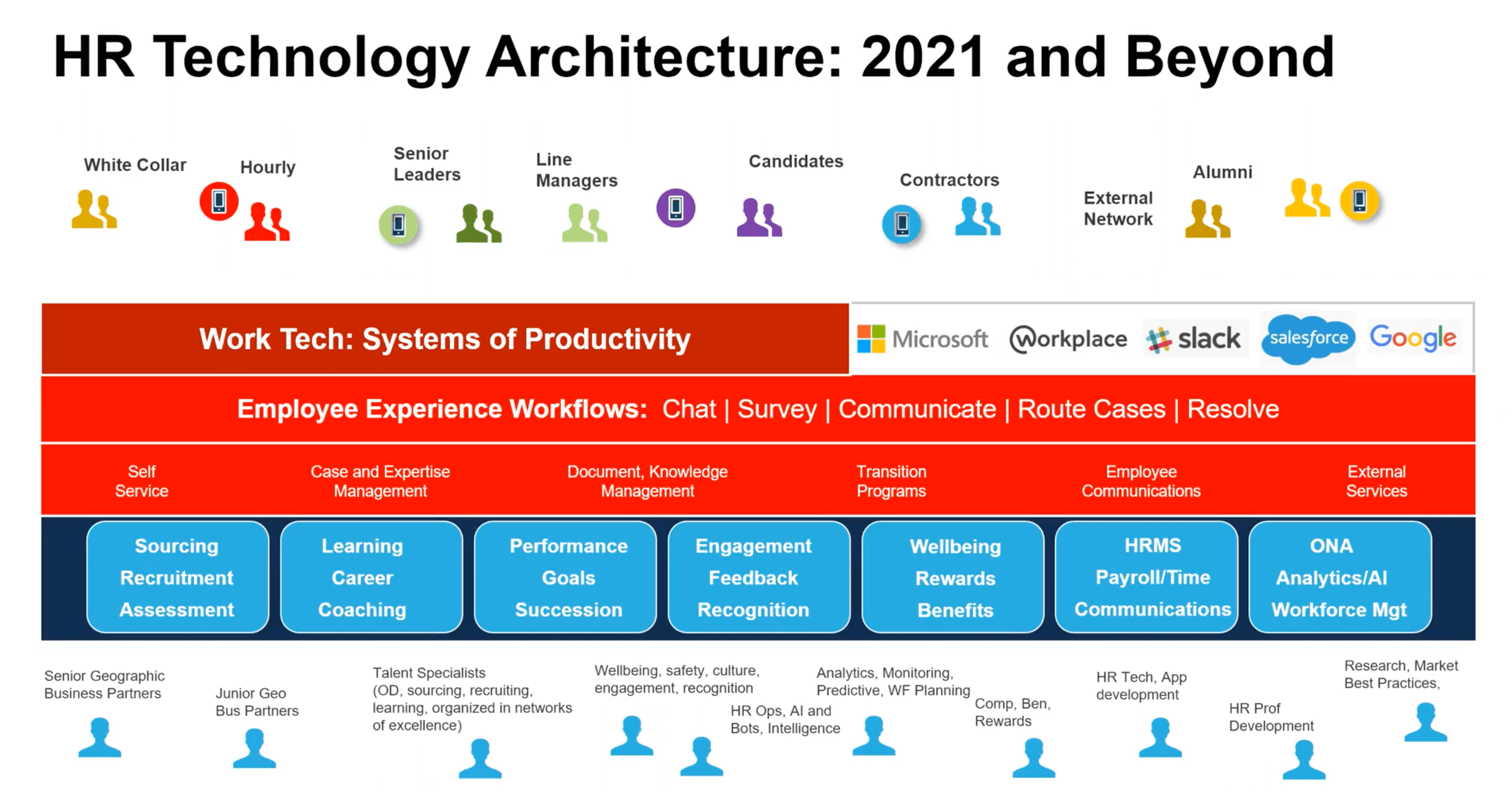Josh Bersin’s recruiting and HR trends for the future
“Talking about the future is always interesting, but I'm going to talk about the present too. And the word that I found interesting today is ‘effervescence’. So we're entering an effervescent time.”

That’s how Josh Bersin opened a fascinating discussion on HR trends for 2021. Josh, a world-renowned industry analyst, educator, and thought leader in all aspects of HR, leadership, and HR technology, led an online presentation titled “The World Just Changed Overnight” on February 18, 2021, with nearly 1,600 registrants signing up to learn more.
You can dive in and watch the hour-long presentation or listen to the podcast – which is enrapturing, informative and refreshingly optimistic. But we know not everyone has that time on their hands (after all, HR pros and recruiters have a busy job!), so we’ve broken Josh’s presentation into a list of 10 major takeaways.
- Lesson #1: The pandemic is just the latest in a series of developments
- Lesson #2: It all comes back to the people
- Lesson #3: Leadership styles are changing – and evolving
- Lesson #4: Human skills are valued more than ever
- Lesson #5: Employee morale is no longer just about benefits
- Lesson #6: DEI is big – but action and accountability are needed
- Lesson #7: A safe space is a decisive space
- Lesson #8: Develop and grow your people
- Lesson #9: The internal talent marketplace is growing
- Lesson #10: HR is at the core of all these trends
Top 10 HR trends for 2021
Wherever you are in the world, your life is likely impacted to some degree by the spread of COVID-19. Under that pandemic umbrella is a smorgasbord of other developments that affect your day-to-day work in HR and recruiting.
This means numerous paradigm shifts and a new, exciting road ahead for those of you in human resources. Here are the top HR trends for 2021, according to Josh Bersin:
Lesson #1: The pandemic is just the latest in a series of developments
It’s easy to think that COVID-19 is the reason for everything we’re seeing in our new world of work. Not so, says Josh. What we’re seeing now dates back to the financial crisis of 2008.
“There’s been a pretty steady evolution of digital transformation, political change, income inequality and job change,” Josh says. “Re-skilling, up-skilling, new job models, new job architectures, new organization models, a focus on the environment, the global climate issues, diversity inclusion equity, Black Lives Matter. I mean, it’s been a ton of stuff.”
He adds: “The pandemic really just accelerated every one of those issues and added well-being and resilience and mental health to that.”
Further reading for you: The disproportionate impact of the pandemic on females compared with males is widely noted – and that’s due to endemic imbalances in the system that existed prior to COVID-19 and will continue to exist afterwards.
Lesson #2: It all comes back to the people
Noted businessman and philanthropist Marcus Lemonis puts it succinctly: “People are the core of every business. Businesses are based on relationships, and relationships are based on people. I would go to an average restaurant run by amazing people over an outstanding restaurant run by awful people.”
Josh emphasized that as another major HR trend for 2021.
“Everything that’s happened in business to make the company more competitive has impacted the people agenda,” says Josh, predicting that this human-centric spirit will become far more mainstream for businesses going forward.
“One way to think about the next year or two is shifting from a business-centered view of your company, where it’s all about the business strategy and the business goals and the business metrics and the business results to the human side of that.”
The same applies for challenges and problems that arise in every business.
“Where our revenue is low, our profits are low, we have an error, we lost an account, we lost a client, we’re not making enough money, there’s always people problems underneath it,” Josh says.
“This has been kind of an exciting year from that standpoint because we’ve been able to talk about the people side of business as really a part of survival.”
Further reading for you: Data shows employee well-being has tangible business benefits. Take care of your employees. Learn how you can do that in your own work.
Lesson #3: Leadership styles are changing – and evolving
Following up on the lesson above, if you’re putting people front and center when thinking about business and human resources, that ultimately means a change in leadership styles.
Josh points out that about a decade ago, one of the most popular topics in HR was to focus on the internal part of work as human performance.
“Well, that went mainstream last year,” he says.”CEOs, board rooms, CHROs have all been focused on mental, physical, financial, emotional health. And this is going to be part of the workforce going forward as is a different way of thinking about leadership.”
The pandemic has a significant role in that, due to the debilitating effects on the work-life balance among other things.
“We’ve learned now in this particular year, especially coming out of last year, that if we aren’t forgiving and kind, and flexible and empathetic, we’re not going to have a company. People aren’t going to come to work. They’re not going to be able to work. So this is a big change.”
Further reading for you: Learn more about what inclusive leadership means, how to identify leadership skills in candidates, and how leaders and managers can foster a more supportive work environment during these stressful times and beyond.
Lesson #4: Human skills are valued more than ever
It’s not just about leadership styles. Human skills are growing in value and coveted more now, says Josh.
“Regardless of the industry or the company you are in, the human skills, the human capabilities to lead, empathize, care for people, sell are organized, inspire are basically all you have,” says Josh. “That really is what your company is.”
He’s quick to point out that there’s an enduring aspect to focusing on human skills – which contributes to the overall sustainability of a business.
“You have intellectual property. Yes, you have software. Yes, you have a brand. Yes, you have products, all that. But those actually decay pretty quickly,” he says.
“If you look at the demand for skills among CEOs, CEOs want human skills. They want power skills, they want skills and the ability to prioritize, to lead, to work in a team, to be flexible, adaptable. Learning agility is a skill, ethics, integrity. These are the things that people really want.”
Josh also shows data that proves the value of those soft skills in terms of compensation – those with a good demonstration of skills in that area tend to earn more.
“If you look at the history of wages by different job categories, the jobs that have increased in demand and increased in wages are not engineering jobs per se. I mean, if you’re in the right engineering discipline, you’ve been doing fine.
“But really it’s what we call high social high math or high social low math management, leadership, project leadership, and people that can do both. People that have technical skills and good human skills.”
Further reading for you: Learn more about soft skills, how they differ from hard skills, and how you can assess soft skills in an interview.
Lesson #5: Employee morale is no longer just about benefits
Another major shift that will continue going forward is the evolution of employee well-being from health to what he terms as ‘total performance’. Josh says there’s been a lot of research on this topic and numerous vendors and services that help in that area – and he’s careful to point out that it’s not just about benefits.
“What really matters is things that help people do their jobs in more productive ways. […] Most people, the reason they enjoy work is they enjoy the work and they enjoy the people at work. And if they can’t get their job done because they’re tired or somebody is getting up in the middle of the night sending them emails, or they don’t have the right skills, they’re not happy.”
“So the well-being agenda is moving from one of cost reduction and insurance costs, which is where it started to focus on total performance. And that’s a really positive thing to me for business.”
He adds that it’s going beyond just work-focused initiatives. “It’s really also reaching into the ideas of citizenship and volunteerism and taking care of society.”
When you look at the data for people under 35, he points out that younger workers are very aware of social issues – and they want to be a part of the solution for that.
“And so, part of well-being at work is also giving people an opportunity to give back, giving people an opportunity to participate in local community events. And so there’s a sort of evolving growth of the well-being strategy and companies to cover all those topics.”
The traditional worker’s contract – i.e. an employee comes to work for a set number of hours in exchange for payment – is no longer sufficient. It goes far beyond that now.
“Purpose and mission really gives people inspiration and energy at work.”
Further reading for you: Learn how companies have built a sense of shared purpose and community during the pandemic.
Lesson #6: DEI is big – but action and accountability are needed
The evolution of diversity, equity and inclusion was a major paradigm shift in 2020, and that will continue in 2021 and beyond.
“The number-one driver of employee engagement is belonging. I feel that I belong at work. I feel comfortable with my team. I feel like people listen to me, that’s really about inclusion.”
Josh emphasizes the importance of taking action, listing five things you can do in HR to create that inclusive culture.
“You have to listen to people. You have to really strengthen HR capabilities. […] You need to make sure senior leadership are committed to a diverse and inclusive business, not just an HR program or a bunch of HR practices. You need to measure it and you need to hold yourself accountable.”
He also shared two examples of tangible action and accountability from the very top, the first being McDonald’s being fully transparent about their diversity metrics – and more so, holding their leaders accountable for diversity via their pay.
“This is what it takes, because this is a business strategy, not an HR strategy,” Josh points out.
He then referenced the Biden administration as an excellent example of what to think about in terms of DEI for the year ahead. He described how they didn’t simply create a program about equity in the United States, but that everything they do in their work is about equity.
Josh described how the administration deals with the transportation infrastructure, with unemployment, healthcare, the vaccines and their rollout, and so on.
“Everything has to be done in an inclusive way,” Josh says. “And we have to look for underrepresented or underprivileged people in an equal way to everyone else.”
He adds that this is what’s really going on in companies. “This is going to be a massive theme continuing through the next year.”
Further reading for you: Learn how to build a DEI strategy in your organization and popular DEI action items to get you started.
Lesson #7: A safe space is a decisive space
A crucial component of DEI – in this case, inclusion – is that of psychological safety. It’s a core element of employee experience (EX) and engagement, Josh says.
He refers to a book by Harvard scholar Amy Edmondson called The Fearless Organization: Creating Psychological Safety in the Workplace for Learning, Innovation, and Growth. Although a few years old now, Josh says it’s especially relevant right now. He refers specifically to a study of healthcare providers and teams, where Amy determined that the highest patient outcomes were the ones with the most number of problems.
On the surface, he says, that didn’t make sense.
“[But when Amy] got under the covers, she realized, they didn’t have more problems, but they talked about the problems. They expose the problems. They discuss them. They had a high degree of psychological safety. Psychological safety means you can speak up and people will listen.”
In short, psychological safety is described as “a belief that one will not be punished or humiliated for speaking up with ideas, questions, concerns, or mistakes.”
Josh then points to a quadrant graph from Amy’s book:
“Companies operate in different quadrants here. We have a client who’s in the upper left quadrant where they actually do not have a psychologically safe environment. Everybody is very nice, but you’re not allowed to speak up. And they’re really trying to change that because they have to move faster and they’re evolving into the cloud and some other things.”
This is a huge part of DEI in 2021, Josh says, adding that it “is not just creating a great diversity inclusion program, but making sure that you have a culture where people can speak up and you can get the information you need to make decisions more quickly.”
Further reading for you: Learn how you can build a psychologically safe workplace.
Lesson #8: Develop and grow your people
Again, in the same theme that your company is made up of humans – it’s crucial to ensure your employees and colleagues stay motivated and interested in contributing to your overall mission. Learning and development (L&D) is a key aspect of this, says Josh.
“This is one of the biggest investment areas of HR. Every year, there’s more research on why we have to do more re-skilling and up-skilling.
“Last year, most companies told me they consumed far more learning than they ever anticipated, and people are happier and more productive and more successful when they’re learning.”
He says the reason for this is purely human. People are learning animals. “And when you’re not learning, you’re not happy.”
“So think about learning as much more than a training problem. It’s really part of your entire employee experience.”
What’s exciting about this for HR practitioners is that you as an HR professional can play a larger role in your company’s growth.
“[You] need to decide what the critical business capabilities are for your company, especially if you’re doing recruiting.
“And from them, determine what skills you want to develop or source in people, and you get to decide what the business capabilities are.”
Further reading for you: A recent TalentLMS survey verifies that L&D is booming as a crucial tool in supporting employee experience. You can also kick things off by hiring a dedicated L&D leader for your organization.
Lesson #9: The internal talent marketplace is growing
In tandem with L&D as a surging trend in 2021 is the rise of the internal talent marketplace.
“We learned from the pandemic that we can move people around inside the company pretty quickly, and they adapt pretty fast,” Josh says. “Human beings are very, very adaptable animals. So I think we’ve really gotten sort of a dose of really awakening that the workforce is a lot more resilient than we maybe ever thought.”
Josh points to the growth of a management structure where many employees are actually in management and working at the same time – in effect, being a playing coach. The result is that companies are becoming more dynamic and simplifying their job architectures and job descriptions, making them less specific to accommodate the fluidly changing roles within a company.
“[What this] really turns companies into is an internal talent marketplace. And in a talent marketplace, you as a recruiter are recruiting inside as well as outside.”
Josh doubles down on the message that recruiters and HR practitioners can look inside the company as well as in the overall talent market for those eligible for a job opening. And the positions vacated by those people – those are opportunities for others within a company to move in as well.
Again, there’s value in L&D if you’re recruiting internally. You want to invest in your employees’ development and education. Not only does it strengthen employee loyalty and keeps turnover low, it also makes for a stronger, more resilient employee base that can fill gaps as quickly as they arise within a business.
“That’s really going mainstream,” Josh says.
Further reading for you: Check out our pros and cons of internal recruitment, as well as a tutorial on how to build a successful internal recruitment strategy.
Lesson #10: HR is at the core of all these trends
And you know what? Josh says HR is at the center of all of this. If you’re in HR, your role has become that much more important and will continue to be so going forward. And being relevant means being even more resilient that you ever have been.
“Everything in the area of talent and recruiting and learning and development and pay is changing. And you can’t just kind of go to a course and learn how to do it, and then do it,” he says.
“You need to learn the basics of it and then learn how other companies are doing it and learn about what’s unique inside your company and the culture and business strategies inside your company, and then design something.”
Your own development in HR
This essentially means a re-skilling of your role as an HR practitioner, Josh says, adding that the HR role is evolving to that of a full-stack professional.
“We need to understand the domains of HR. We need to understand how to be good consultants. We need to understand the business and the industry and the competitive drivers in our company. […] And we need to understand how to be leaders, how to interact with leaders and how to develop leaders. And that’s a lot.”
Technology is your friend
This means adding technology to your workflow in order to flourish, Josh says.
“Companies have spent a lot of time and will continue to spend a lot of time on HR tech. And more and more of the energy in the HR tech space is going into this red area, which I call the employee experience layer, making the systems easier to use, making them more intelligent, allowing you to interact with them on a chatbot or by voice, or more recommendations from the system on what you want to do.”
And you needn’t worry about tech taking over your job. Quite the opposite, especially in recruitment.
“You in recruiting are just like everybody else. You’re getting augmented; you’re not getting replaced.”
Josh lists three major areas where tech can be a significant asset.
“Sourcing – most of these platforms, like Workable, can find candidates more quickly and better qualified candidates. […] The second is screening, chatbots and intelligent screening tools can quickly weed out people that are just the wrong fit and they can self-select.
“And the third is in the area of assessments, which is massive.”
Listen to your colleagues
The growth of employee experience (EX) as a crucial element of HR work means establishing a two-way street of communication between yourself and your colleagues.
“We need to listen to people and let them tell us. So, open meetings, surveys, lots and lots of crowdsourcing activities. These are really part of the EX 2.0. […] The EX market has become a market of continuous listening.”
Josh adds that this is something we’ve already been doing with customers on a regular basis – so this practice of listening has grown to include your employees as well.
“I mean, you don’t survey the customers once every 10 years. You try to serve the customers maybe every quarter, if you can, or you ask the salespeople, what are people saying about our products? Or why are they returning them? Or why are they not buying them? We need that data, and we need it in HR too.”
Further reading for you: Well, Josh says it better in the next section, so we’ll let him take it from here on.
Your job is crucial to the company
Josh closes things out in his presentation on HR trends for 2021 by reaffirming the importance of a recruiter role in all this. Recruiting, he says, is the most important thing that happens in a company.
“If you don’t recruit the right people, forget everything else. You can’t just train people that are the wrong fit for your company, the wrong culture fit, the wrong skill set, the wrong background,” he stresses. “Your ability to understand the organization and operate in an empowered way to find the right people is critical.”
Josh shares an anecdote from his research on talent acquisition several years ago.
“I had talked to the head of recruiting at a large oil company. And I asked him just out of the blue; ‘Is there any one thing that you think is the most important characteristic of a high performer when you recruit them? Is it degree, experience, culture, age, personality, intelligence, what is it?’
“He said, ‘It’s the recruiter.’ I said, ‘Why, what are you talking about?’ He said, ‘Great recruiters hire great people.’ I thought, well, that’s actually a pretty good point.”

